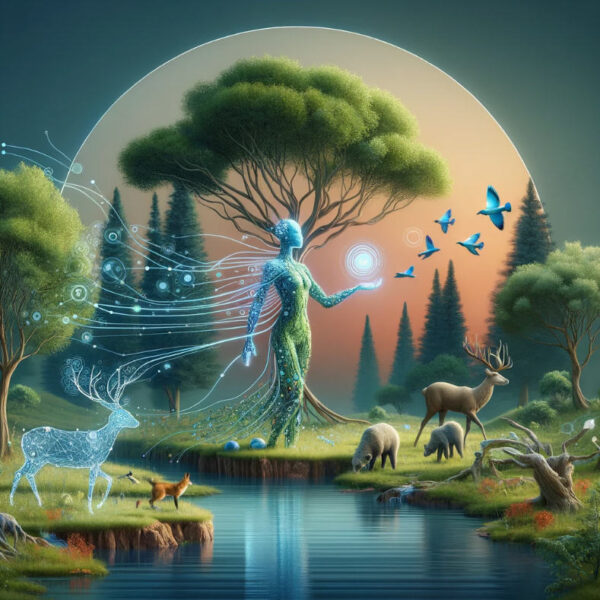The Green Guardian: Artificial Intelligence in Environmental Conservation
In the face of escalating environmental challenges, from climate change to biodiversity loss, Artificial Intelligence (AI) has emerged as a beacon of hope. By leveraging AI, scientists and conservationists are finding innovative ways to protect our planet. This article explores how AI technologies are being utilized in environmental conservation, the benefits they offer, and the future of AI in this vital field.
AI in Action: Real-World Applications
Q: How is AI being used in wildlife conservation?
A: AI technologies are revolutionizing wildlife conservation through habitat monitoring, species identification, and poaching prevention. Machine learning algorithms analyze data from camera traps, satellites, and drones to track animal movements, assess population health, and identify poaching activities in real-time. For example, the AI-powered system, PAWS (Protection Assistant for Wildlife Security), analyzes past poaching patterns to predict future poaching hotspots, enabling rangers to preemptively counteract these threats.
Q: Can AI help combat climate change?
A: Yes, AI plays a crucial role in combating climate change by optimizing renewable energy production, reducing energy consumption, and enhancing climate modeling. AI algorithms can forecast renewable energy outputs, like wind and solar power, allowing for better integration into the power grid. Moreover, AI-driven systems are being developed to capture carbon dioxide from the atmosphere more efficiently, a critical step towards reducing global greenhouse gas levels.
The Benefits of AI in Conservation
Q: What are the main advantages of using AI in environmental conservation?
A: AI offers speed, scalability, and precision that traditional conservation methods cannot match. By processing vast amounts of environmental data much faster than humans, AI can quickly identify trends and anomalies. This capability is crucial for early detection of environmental degradation or illegal activities. Additionally, AI can simulate various conservation scenarios to guide decision-making processes, ensuring more effective conservation strategies.
Navigating Challenges
Q: What challenges do conservationists face when implementing AI?
A: While AI has enormous potential, its implementation in conservation faces several challenges. High costs, data privacy concerns, and the need for technical expertise can hinder AI adoption. Moreover, there’s a risk of over-reliance on technology, potentially overlooking local knowledge and the social dimensions of conservation. Ensuring the ethical use of AI and balancing technology with human insights are vital for its success in environmental conservation.
The Future of AI in Environmental Conservation
Q: What does the future hold for AI in environmental conservation?
A: The future of AI in environmental conservation is promising, with ongoing advancements expanding its potential applications. From enhancing biodiversity through genetic algorithms to creating more resilient ecosystems via AI-assisted restoration projects, the possibilities are vast. As AI technology continues to evolve, its integration with other innovative technologies like blockchain and IoT (Internet of Things) is expected to further transform conservation efforts, making them more effective and inclusive.
Conclusion
Artificial Intelligence stands as a powerful ally in the fight against environmental degradation, offering innovative tools for safeguarding our planet. As we navigate the complexities of conservation in the 21st century, embracing AI’s potential while addressing its challenges will be crucial. By harnessing the power of AI, we can hope to leave a thriving, resilient Earth for future generations.
Explore more about the intersection of technology and conservation at ThaiNN.com, where innovation meets environmental stewardship.



